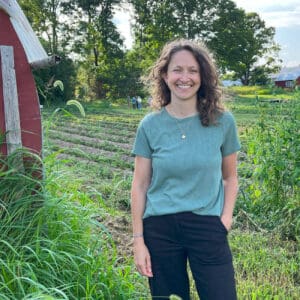Access to land remains a top challenge for many farmers, especially new, young, or socially disadvantaged farmers. Farmers face common challenges and obstacles – appropriate land is hard to find and expensive to buy, renting land can seem insecure or feel like a risky investment, and farming can feel isolating. For these reasons and more, and especially within the current market, accessing farmland as a group is particularly interesting. Many farmers are exploring ways to access farmland together.
Accessing farmland as a group can solve some land access obstacles and offer multiple benefits. By working together in solidarity, there’s a spirit of cooperation and sharing resources, which can make land access more affordable and reduce risk. While it comes with challenges, group farming can support a common vision that improves farmers’ chances of success, as well as their quality of life, social connections, and mental health.
A new educational tool, Accessing Farmland Together, describes methods for farmers to lease or own farmland as a group. There is no one model for cooperative farming, and each has its pros and cons. The right method for each farmer depends on a lot of factors. A method that works for one group might not be appropriate for another. It is important to know the various options to make informed decisions.
Webinar to learn more!

Land For Good and Cultivemos (formerly known as the Northeast Farm and Ranch Stress Assistance Network), invite farmers and farm service providers to a webinar to learn about group land access concepts and how to use this new educational tool.
Presenters will include Land For Good staff, and farmers with lived experience in group tenure models. Two webinar sessions will be offered, one for farm service providers and one for farmers.
For service providers: December 12, 2022, 1:00-3:00 pm
For farmers: December 14, 2022, 1:00-3:00 pm
Register now. Zoom link will be provided following registration.
This work is supported by Cultivemos and The National Young Farmers Coalition with funding provided by the USDA National Institute of Food and Agriculture, Farm and Ranch Stress Assistance Network (FRSAN) project.






